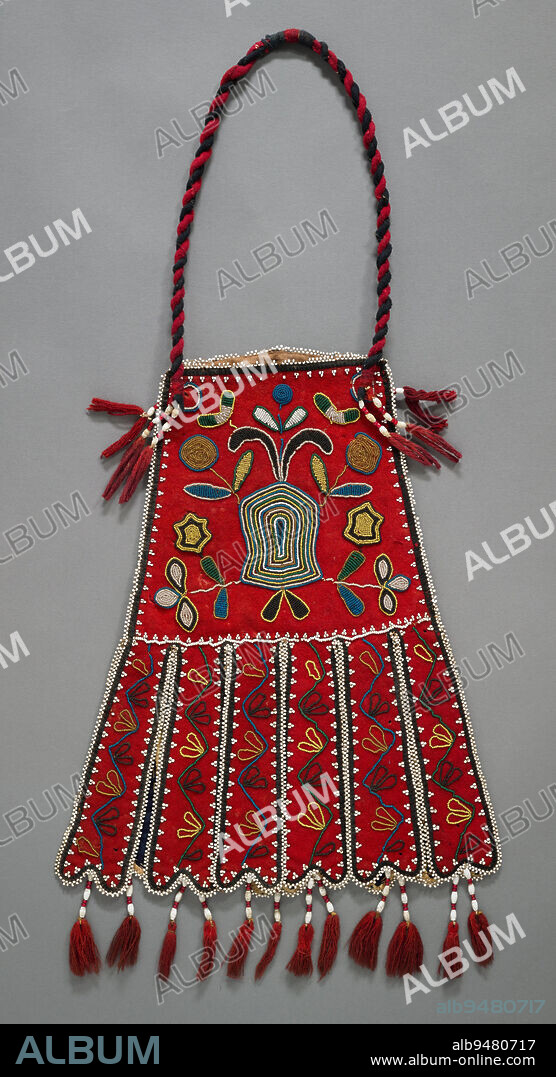alb9480717
Firebag, c. 1830, 12 1/4 × 26 1/2 in. (31.12 × 67.31 cm) (with tassels and cord), Wool, beads, United States, 19th century, In the early 1800s, a particular kind of elaborately beaded baga firebagcaptured the imagination of Native women artists in the Subarctic, the Northern Plains, and some coastal regions of the Pacific Northwest. Firebags were made to store tobacco and flint, and are also known as Octopus Bags, a reference to their dangling, tentacle-like tabs at the base of the pouch. This particular firebag displays beadwork similar to that of the Dakhóta, Metis, and Cree peoples, known for their skillful use of tiny beads, with a bold central design and subtle floral motifs on red wool. In addition to the very fine beaded work that frames the piece, there are two beaded eagle designs on the back of the bag, making it unique.

|
Ajouter à une autre Lightbox |
|
Ajouter à une autre Lightbox |



Avez-vous déjà un compte? S'identifier
Vous n'avez pas de compte ? S'inscrire
Acheter cette image.
Sélectionnez l'usage:

Légende:
Voir la traduction automatique
Firebag, c. 1830, 12 1/4 × 26 1/2 in. (31.12 × 67.31 cm) (with tassels and cord), Wool, beads, United States, 19th century, In the early 1800s, a particular kind of elaborately beaded baga firebagcaptured the imagination of Native women artists in the Subarctic, the Northern Plains, and some coastal regions of the Pacific Northwest. Firebags were made to store tobacco and flint, and are also known as Octopus Bags, a reference to their dangling, tentacle-like tabs at the base of the pouch. This particular firebag displays beadwork similar to that of the Dakhóta, Metis, and Cree peoples, known for their skillful use of tiny beads, with a bold central design and subtle floral motifs on red wool. In addition to the very fine beaded work that frames the piece, there are two beaded eagle designs on the back of the bag, making it unique.
Crédit:
Album / quintlox
Autorisations:
Modèle: Non - Propriété: Non
Questions sur les droits?
Questions sur les droits?
Taille de l'image:
4254 x 7831 px | 95.3 MB
Taille d'impression:
36.0 x 66.3 cm | 14.2 x 26.1 in (300 dpi)
Mots clés:
AMERICAIN (ETATS-UNIS) • AMERICAIN (USA) • COUPLE (BATEAU) • ÉTAS UNIS • ÉTAS-UNIS • ETATS UNIS • ETATS-UNIS • IMAGINATION • LAINE • PIERRE A FEU • SILEX • TISSU: LAINE • U. S. A. • XIXE SIÈCLE • ŽTATS-UNIS
 Pinterest
Pinterest Twitter
Twitter Facebook
Facebook Copier le lien
Copier le lien Email
Email
